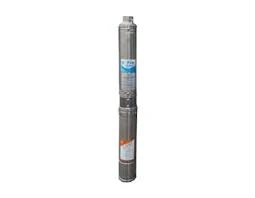Dec . 05, 2024 07:22 Back to list
Underwater Pump Motor Applications and Benefits for Efficient Fluid Movement
Exploring Underwater Pump Motors The Key to Efficient Water Management
Underwater pump motors play a crucial role in a variety of applications, from agriculture to municipal water systems. As the demand for efficient and reliable water management technologies continues to grow, understanding the intricacies of underwater pump motors becomes essential. This article explores the design, functionality, benefits, and challenges associated with underwater pump motors, providing insight into their importance in modern water systems.
What Are Underwater Pump Motors?
Underwater pump motors are specialized electric motors designed to operate submersibly, meaning they work while submerged in water. These motors are typically coupled with pumps to deliver water from deep wells, boreholes, or other water bodies to the surface. They are integral in applications such as irrigation, drainage, aquaculture, and municipal water supply.
Design and Functionality
The design of underwater pump motors is tailored to withstand harsh underwater conditions, including high pressure and corrosive environments. Made from durable materials like stainless steel or thermoplastics, these motors often feature hermetically sealed enclosures to prevent water ingress.
Functionally, underwater pump motors work on the principle of electromagnetic induction. Electrical power is converted into mechanical energy, which causes the motor shaft to rotate. This rotation drives the pump impeller, creating the flow of water. The efficiency of this process is paramount, as it directly impacts energy consumption and operational costs.
Benefits of Underwater Pump Motors
One of the primary advantages of underwater pump motors is their ability to operate in deep water with minimal noise and vibration compared to surface-mounted pumps
. This is particularly beneficial in residential areas and wildlife habitats where noise pollution is a concern.Moreover, underwater pump motors generally require less maintenance due to their sealed construction, which protects them from contaminants. This reliability reduces downtime and maintenance costs, making them an attractive option for many operators.
underwater pump motor

Energy efficiency is another significant benefit. Many modern underwater pump motors are designed to meet stringent energy standards, optimizing power usage. This is especially important in regions where electricity costs are high or where sustainability is a priority.
Applications
Underwater pump motors are used in a wide array of applications. In agriculture, they are vital for irrigating crops, especially in arid regions. The ability to extract water from deep wells ensures that farmers can maintain healthy crop yields despite challenging environmental conditions.
In municipal water systems, these motors are essential for transporting water from treatment plants to homes and businesses. Their efficiency and reliability contribute to the overall effectiveness of water distribution networks.
Aquaculture also benefits from underwater pump motors, as they help manage water circulation and maintain optimal conditions for aquatic life.
Challenges and Considerations
Despite their numerous advantages, underwater pump motors do face certain challenges. One significant concern is the potential for overheating, particularly if the motor is not properly sized for its application. Overheating can lead to premature failure, underscoring the importance of selecting the appropriate motor based on the specific conditions and requirements of the operation.
Additionally, the initial cost of underwater pump motors can be higher than surface-mounted alternatives. However, this is often offset by long-term savings in energy and maintenance.
Conclusion
Underwater pump motors are indispensable in contemporary water management systems, offering efficiency, reliability, and reduced environmental impact. By understanding their design, operational principles, and applications, stakeholders can make informed decisions that enhance water resource management. As technology continues to advance, we can expect further innovations in underwater pump motor systems, leading to even more efficient water management solutions. Whether in agriculture, municipal services, or aquaculture, these motors will remain at the forefront of our efforts to optimize water use in an increasingly resource-constrained world.
-
Submersible Water Pump: The Efficient 'Power Pioneer' of the Underwater World
NewsJul.01,2025
-
Submersible Pond Pump: The Hidden Guardian of Water Landscape Ecology
NewsJul.01,2025
-
Stainless Well Pump: A Reliable and Durable Pumping Main Force
NewsJul.01,2025
-
Stainless Steel Submersible Pump: An Efficient and Versatile Tool for Underwater Operations
NewsJul.01,2025
-
Deep Well Submersible Pump: An Efficient 'Sucker' of Groundwater Sources
NewsJul.01,2025
-
Deep Water Well Pump: An Efficient 'Sucker' of Groundwater Sources
NewsJul.01,2025
-
 Submersible Water Pump: The Efficient 'Power Pioneer' of the Underwater WorldIn the field of hydraulic equipment, the Submersible Water Pump has become the core equipment for underwater operations and water resource transportation due to its unique design and excellent performance.Detail
Submersible Water Pump: The Efficient 'Power Pioneer' of the Underwater WorldIn the field of hydraulic equipment, the Submersible Water Pump has become the core equipment for underwater operations and water resource transportation due to its unique design and excellent performance.Detail -
 Submersible Pond Pump: The Hidden Guardian of Water Landscape EcologyIn courtyard landscapes, ecological ponds, and even small-scale water conservancy projects, there is a silent yet indispensable equipment - the Submersible Pond Pump.Detail
Submersible Pond Pump: The Hidden Guardian of Water Landscape EcologyIn courtyard landscapes, ecological ponds, and even small-scale water conservancy projects, there is a silent yet indispensable equipment - the Submersible Pond Pump.Detail -
 Stainless Well Pump: A Reliable and Durable Pumping Main ForceIn the field of water resource transportation, Stainless Well Pump has become the core equipment for various pumping scenarios with its excellent performance and reliable quality.Detail
Stainless Well Pump: A Reliable and Durable Pumping Main ForceIn the field of water resource transportation, Stainless Well Pump has become the core equipment for various pumping scenarios with its excellent performance and reliable quality.Detail
